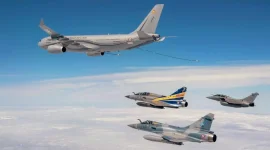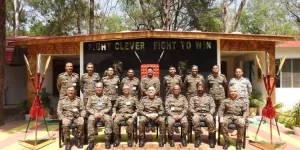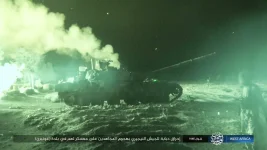- Views: 251
- Replies: 7
Recent safety incidents involving the Advanced Light Helicopter (ALH) Dhruv have led the Indian Armed Forces to ground the entire fleet, prompting a close examination of the helicopter's reliability.
This situation has brought increased scrutiny upon the French aerospace company Safran, which co-developed and supplies the Shakti engines powering the helicopters through a partnership with Hindustan Aeronautics Limited (HAL).
The grounding raises significant questions about the operational safety of the ALH Dhruv and potentially impacts India's broader goals for self-sufficiency in defence manufacturing.
The ALH Dhruv, designed and produced by India's state-owned HAL, has been a cornerstone of the nation's indigenous defence capabilities since its introduction in 2002.
With over 330 units delivered, the helicopter serves diverse roles across the Indian Army, Air Force, Navy, and Coast Guard, including troop movement, reconnaissance, search and rescue operations, and medical evacuations.
Despite its versatility, the ALH Dhruv platform has faced challenges, experiencing several accidents and technical snags over its operational history, leading to temporary groundings in the past.
The decision to ground the fleet again, notably following an incident in May 2023 where an Army ALH crashed in Jammu and Kashmir, stemmed from a series of recent mishaps.
While official investigations by HAL and the military are ongoing to determine the precise causes, initial reports have suggested potential problems with the helicopter's critical flight control systems and engine components.
Consequently, the Shakti engine, jointly developed by HAL and Safran Helicopter Engines specifically for the ALH, has become a focal point of the investigation.
Safran Helicopter Engines, a major global player, partnered with HAL to create the Shakti engine, also known as the Ardiden 1H1. This engine was designed as an improvement over the earlier Turbomeca TM333-2B2 engines used in the initial Dhruv versions, offering enhanced power and performance, particularly for challenging high-altitude operations common in India.
Over 500 Shakti engines have been manufactured, powering not just the ALH Dhruv but also its armed variant, the Rudra, and the Light Combat Helicopter (LCH) Prachand, raising concerns about potential fleet-wide implications if engine issues are confirmed.
While HAL holds the primary responsibility as the designer and manufacturer of the ALH Dhruv, Safran's critical role as the engine technology partner has naturally drawn attention.
Defence analysts and military officials are reportedly investigating whether the integration of the Shakti engine might have introduced unforeseen technical challenges or if issues relate to engine reliability or specific maintenance procedures. After the May 2023 grounding, checks were mandated on the control rods and booster assemblies on the ALH fleets.
The focus on the Safran partnership also occurs within the context of India's strategic push towards greater self-reliance in defence through initiatives like 'Make in India' and 'Atmanirbhar Bharat'.
Some experts point to the potential vulnerabilities of relying on foreign technology partners, even in joint ventures, suggesting that dependencies can sometimes hinder full technological independence, though specific issues regarding technology sharing in the Shakti program have not been officially confirmed as the root cause of the current problems.
Operationally, the grounding of the ALH Dhruv fleet significantly impacts the Indian Armed Forces. This versatile helicopter is essential for operations across varied Indian terrains, including high-altitude areas like Ladakh near the Line of Actual Control (LAC) with China, desert regions, and areas requiring counter-insurgency capabilities.
Its unavailability forces reliance on ageing platforms like the Chetak and Cheetah helicopters, which lack the Dhruv's modern features and payload capacity. Furthermore, the ALH's crucial role in humanitarian aid and disaster relief operations is hampered during the grounding period.
In response to the situation, HAL has committed to a comprehensive investigation, analysing flight data, examining recovered components, and reviewing maintenance logs to identify and rectify the underlying causes.
The company is collaborating closely with the Armed Forces to implement necessary safety modifications and checks, including those related to the control mechanisms previously identified as areas of concern. HAL leadership has stated its dedication to resolving the issues promptly to restore the fleet to service.
The collaboration between HAL and Safran remains crucial in addressing any engine-related findings. Both companies are reportedly engaged in assessing the Shakti engine's performance and reliability data.
The outcome of these investigations and any subsequent modifications will be vital not only for the future operational safety of the ALH Dhruv, Rudra, and LCH Prachand fleets but could also influence Safran's position in future Indian defence projects, including the planned Indian Multi-Role Helicopter (IMRH) program.



